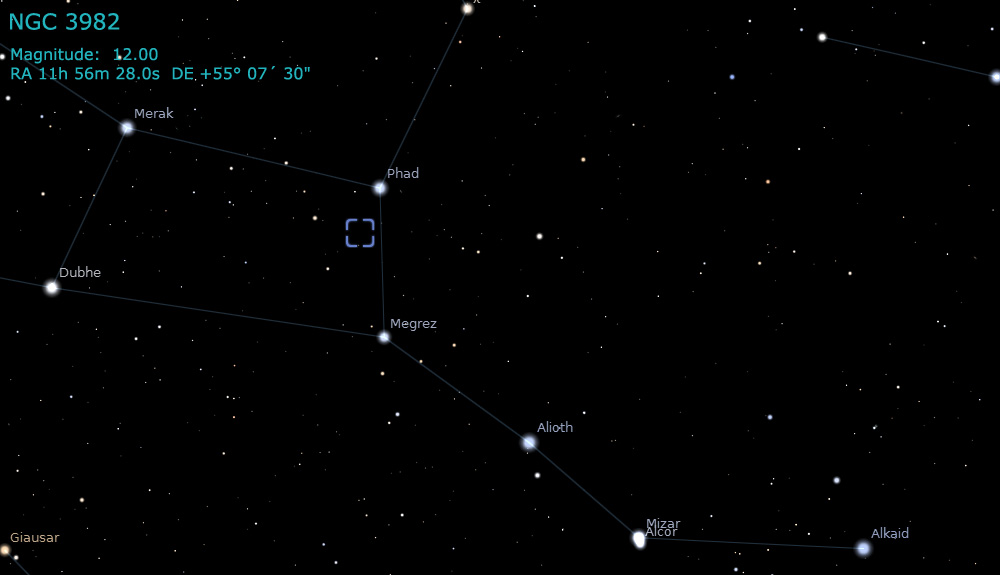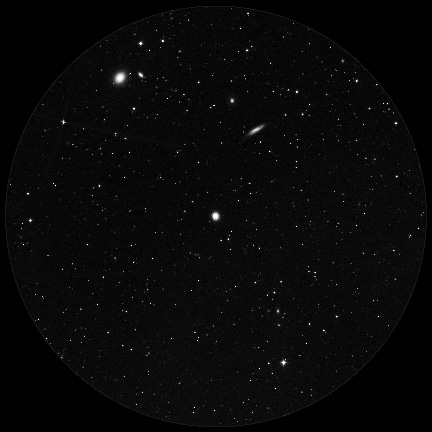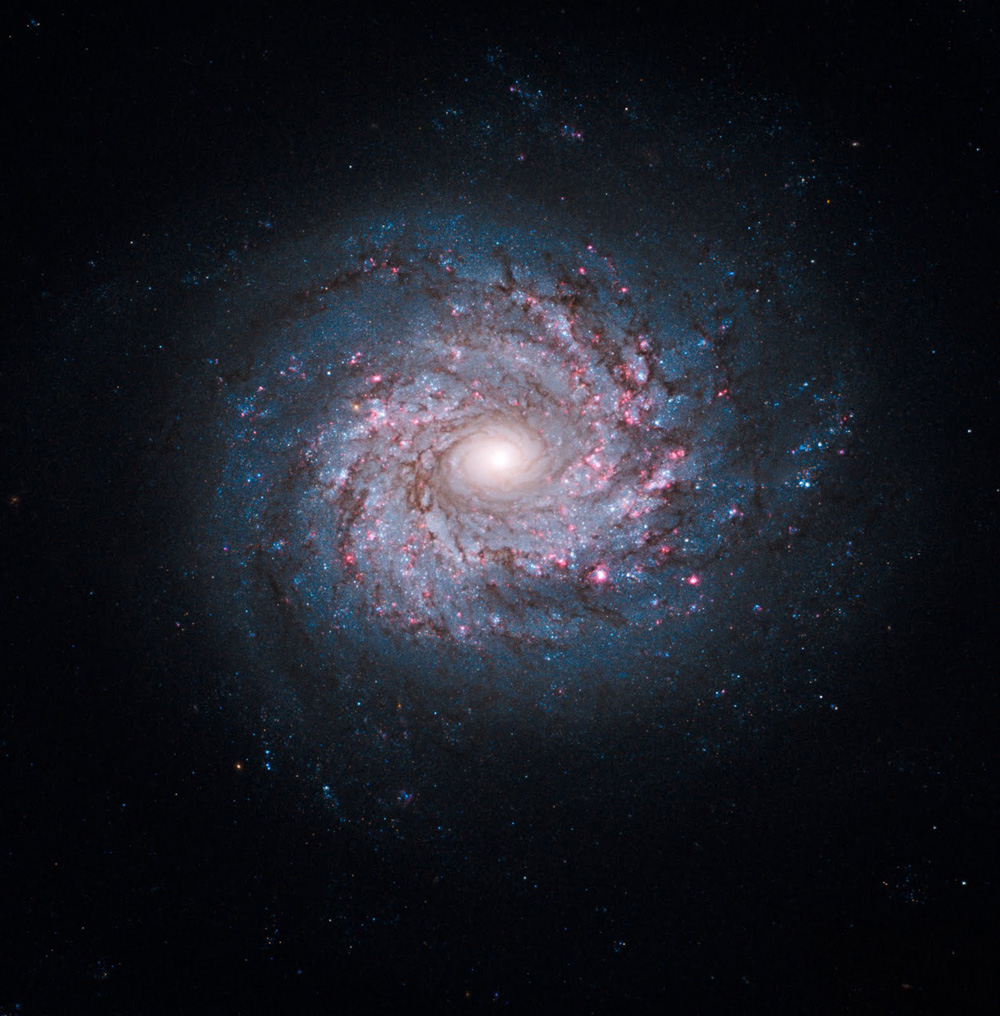NGC 3982 is an intermediate spiral galaxy
approximately 68 million light-years away in the constellation
Ursa Major. NGC 3982 is a part of the M109 Group, a group of
galaxies located in the constellation Ursa Major that may
contain over 50 galaxies. At an apparent magnitude of 12.0, NGC
3982 needs a telescope to be viewed. Using small telescopes, the
galaxy appears as a very faint, diffuse patch of light with its
central region appearing as a slightly brighter diffuse ball.NGC
3982 is a Seyfert 2 galaxy that spans about 30,000 light-years,
about one-third of the size of our Milky Way galaxy. The galaxy
is receding from us at about 1109 km/s. The galaxy is a typical
spiral galaxy, similar to our Milky Way. It harbors a
supermassive black hole at its core and has massive regions of
star formation in the bright blue knots in the spiral arms.
Supernovae are likely to be found within these regions. NGC 3982
has a high rate of star birth within its arms, which are lined
by pink star-forming regions of glowing hydrogen and newborn
blue star clusters. Its bright nucleus is home to older
populations of stars, which grow more densely packed toward the
center. The galaxy also has active star formation in the
circumnuclear region estimated at 0.52 M⊙/year. The HST image of
NGC 3982 shows a mini-spiral between the circumnuclear
star-forming region and the galaxy's nucleus, which could be the
channel through which gas is transported to the supermassive
black hole from the star-forming region.





